- Home
- Robin McKinley
Dragon Haven Page 3
Dragon Haven Read online
Page 3
So I’m going to give you a rundown on the zoo, and then we’re out of there, okay? So pay attention. The whole Draco mess started with some eighteenth-century British explorer guy calling that Russian lizard Draco russo. We have three nice russo in the zoo, and the female’s pregnant, finally. She’s Eleanor’s favorite because they’re going to be the first babies since Eleanor’s been old enough to pay attention to what goes on at the zoo. Russo’s pretty mellow too so nobody stops Eleanor from (strictly out of tourist hours) poking rhubarb through the bars at the expectant mom, since only the males are poisonous. And Eleanor does know to call them lizards. I told you she has some sense.
After that we have the Chinese dragon, Draco chinensis, which usually goes about eight foot long and mostly eats snails. Sure, if it stepped on your foot you’d go “ow” and it has a scary face, but those fangs are just tufts of hair on the jaw. We have six of them, but they all poop in the same corner most of the time, which makes me like them, as much as I’m going to like any lizard, but sweeping up the snail shells is a pain, because we have to do it really carefully—they won’t eat anything they haven’t peeled themselves so that limits the options. One of them still managed to get an infected foot once from a broken snail shell and wasn’t that a big hassle. There’s a vet in Cheyenne that knew a lot about lizards before she moved to Cheyenne and has learned a lot more since, but it’s expensive to get her here. We don’t have our own regular vet, of course—we can’t afford it. I have to give Eric credit, much as it goes against the grain, he invented his own correspondence course in reptile veterinary, and mostly he copes.
Then there’s the Madagascar dragon, Draco madagascariensis, with its vestigial wings, but if you were up on your paleontology you would know that it spent a few million years being a bird and then changed its mind and went back into Reptilia, and it hisses because it hisses, not because it used to breathe fire. It eats anything and everything, including very small children and very tottery old people, but it’s no threat to the rest of us and no threat at all as long as it’s got plenty of other stuff to eat—it doesn’t actually like to go to the effort to catch anything.
My favorite f.l. arguments though are for Draco sylvestris. This is just a big chameleon, and the point is it lives in trees. The thicker the trees the better it likes it. Sounds like a real short evolutionary dead end to me, evolving flame-throwing when you live in a forest. Duh. Because it all comes back to fire, you know. Never mind the size, or even the wings. Dragons are the only animals (besides humans) who habitually eat their food cooked. They don’t like it cooked through, but they like a nice char-broiled effect.
By the way, sylvestris is the least popular of the zoo exhibits—they’re really hard to see. You don’t believe they can be, because they run up to twenty feet long, but you’d be surprised. They look like branches of trees. Really. Us cage cleaners have to count them to make sure we got them all before we lock them up on the other side and clean their empty cage, or we may find one of the tree branches getting startled and trying to run away. I awfully nearly lost one out the door once, where I’d parked my wheelbarrow, but fortunately it didn’t like the look of the wheelbarrow either and veered away at the last minute. Kit was next door cleaning out madagascariensis that day so he saw what happened, but he didn’t tell Eric.
I’ve already told you about odoratus, who is at the very end of the other row of Draco houses. It doesn’t usually get much more than six feet long, but it has these huge smelly sulfurous belches that the f.l.s say mean that it used to breathe fire like a real dragon, and that it’s just evolved in the wrong direction for the last million or so years. Please. It evolved into huge smelly sulfurous belches because no one would want to eat anything that smells like that. Which is why our odoratus house costs more than all the rest of the zoo put together, because it’s all glass, to protect the tourists. We need the tourists to keep coming. We need the money. I know I already said that. We say it to each other all the time. It’s the truth. And, okay, I admit it, the zoo is a draw, since you’re not going to see our real dragons, except in the tourist center theater.
Listen to me now because there will be a test later. There is only one real dragon, and that’s Draco australiensis. They’re extinct in the wild, but there’s a place not far from the Grampians outside Melbourne that’s been made a sanctuary that has quite a few of them—maybe as many as five hundred—although rumor has it the numbers are dropping and it hasn’t been as many as even four hundred in years, but it’s not a rumor I want to believe, so I don’t. Australia’s nearly the only place that has enough space left to give some to dragons. I suppose they also have guilty consciences because it’s mostly their own poachers that killed them off, although when dragon endocrine extract became the fashionable aphrodisiac about a hundred years ago a lot of foreign poachers came to help, aided and abetted by the local sheep farmers because dragons love toasted sheep.
The only other two places with dragons now are the park in Kenya where Mom died, and us, Smokehill. We think we have maybe two hundred here, and nobody knows why; the weather should’ve killed ’em off long ago. We’ve actually got more acres than the Australian place, but dragons are native to Australia so it’s not surprising they can live there okay if nobody murders them.
Smokehill as a dragon preserve is an accident. Almost ninety years ago Peter Makepeace brought four dragons here because the Cleveland Zoo couldn’t cope any more and nobody else would have them. That was during the era when most people thought the sooner Draco australiensis went extinct the better, although no one said it out loud because there were environmentalists even in those days. Old Pete knocked together a few cages (dragons hate cages, which is why zoos had such trouble with them—nobody ever built a cage that didn’t feel like a cage to a dragon, and, of course, dragons are large, and experiments in dragon keeping are very expensive), and prepared to try to nurse them through their first winter. He always said later he didn’t expect to succeed but somebody had to give it a try and he didn’t see anybody else with a few thousand acres to spare in a better climate making an offer.
Smokehill was really wild then. It’s like suburbia now in comparison. A few of the old cages are still sort of standing, and they’re part of the bus tour. They are not in themselves very interesting, maybe, but they are huge which kind of reminds you about how big dragons are, and it also gives you a clue about how really creative Old Pete had had to be, to do what he did, to do it at all. I’m sorry his old cabin isn’t still around. We’ve got some grainy old photos but that’s all. It was where the Center is now. (Think, if you dare, about using an outhouse in our winters, where a bad January never gets above twenty below, and where a blizzard can arrive in less time than it takes to pee.)
Well, they didn’t die. In fact they thrived, in spite of the cages, and the weather. Maybe they just liked Old Pete. From his journals, he didn’t have a clue what he was doing, but he found them really interesting and although they had to live in cages they didn’t have a lot of gawkers gawking which would sure be enough to put me off my toasted sheep. Whereupon he found himself the latest unwanted-dragon dumping ground. By the next winter he had twenty dragons and was running out of plausible places to put cages—besides how expensive building dragon pens was. And Pete didn’t like gawkers either, so kept delaying turning his charity rescue project into a business. But he had to do it finally and eventually it became Smokehill National Park.
Old Pete’s dad had bought up the Smokehill territory because he got the whiff of “gold” slightly before the government did, so when a few people started finding gold, the gov had to deal with old Mr. Makepeace. Old Mr. Makepeace senior was more devious than his son and a lot more aggressive, so the gov found itself between a rock and a hard place, the Native Americans on one hand who believed that the little piece of paper they’d got from the gov a while back meant that they owned the territory, and Mr. Makepeace, who had another little piece of paper that said he owned the territory, and
he knew how to fight dirty in ways the Native Americans didn’t. So the gov went on flapping and fudging, and old Mr. Makepeace died, and his son Pete grew up to have a social conscience ahead of its time. And then Pete found himself with twenty dragons on his hands and a lot of land that nobody was using for anything much.
So Pete got together with the Sioux and Cheyenne and Arkholas and they talked and talked, and Pete fell in love with someone’s daughter and then he married an Arkhola (and then none of his dad’s fancy town friends would speak to him which in his journals he calls “a serendipitous concomitant”), and maybe that’s what tipped the balance, because the Native Americans weren’t really in a mood to go along with anything a white man said at that point. But Pete got an agreement out of them that they’d stop being a pain in the ass if the federal government would make Smokehill a national park. And by that time the gov was tired of the struggle, said the hell with it, and folded.
Pete spent the rest of his dad’s money first hiring a lot of inventors to create a dragonproof fence, and I can’t tell you anything about that because the math and stuff is waaaay beyond me, but I can tell you that the inventors only succeeded because some of them got interested in the problem, or interested in dragons, and stayed on when Pete couldn’t pay them any more—because once they managed to invent it he still had to pay to put it up—which cost like the national debt of Europe. But they did it. Old Pete spent the last of his dad’s money creating the Makepeace Institute, and died broke but (I hope) a happy man. And our best Rangers are Native American or part Native American, mostly Arkholas. Billy, he’s Head Ranger and a brilliant guy, he’s the great-great-grandson of Old Pete and his Arkhola wife.
What I can tell you about the dragon fence is that most of it is sort of invisible, except for these fancy cement pillars every half mile or so where all the gizmos and stuff live, with little metal plates set in and big red DANGER signs. If you try to walk through it it’s like walking into a wall but worse. It’s like the wall zooms out to punch you. (And no, the science guys say it is not strong enough for any kind of serious like war use. I hate it that people keep asking this. So, listen, no, one little tiny half-hearted bomb and the fence melts, like holding a match to a balloon, big noisy messy POP. When the Borg or the Klingons land, we’ve still had it, okay?) But when you look through it everything looks kind of runny, and the colors are all wrong, and watching anything moving, a tourist coach or even a bird, will make you seasick so fast you won’t know what hit you.
This last effect is so bad that the front part of the park, where the Institute and the tourist center are, and the beginning and the end of the bus tour route (the middle stays away from the fence), has ordinary boring solid walls twelve feet high. The funny thing is that some people think that is the dragon fence, and they’re disappointed. Like twelve feet of anything would keep in something that flies. Yo, left your brain at home, did you?
Anyway. Pete ended up with about fifty dragons before the worldwide crash of Draco australiensis, when the few that were left in zoos all died, and they were confirmed as extinct in the wild. There were five parks or preserves to begin with that still had any, but the Louisiana and Patagonia preserves both folded in the first couple of decades, partly because of fencing problems. Which means keeping bad guys out a lot more than it means keeping dragons in. Dragons don’t actually move around that much once they’re settled. (They hung around in the middle of Australia for millions of years.) So the poachers just changed their airplane tickets or their donkey cart coupons or whatever and started going to Louisiana and Patagonia because their fences weren’t very good. Ours is way far the best, but no one wants to pay for the specs and no one has successfully stolen them. And everybody pretends that we need the fence because dragons are the biggest of all the big dangerous wild animals and they would eat humans if they got out. Sure, they could. But they don’t. They never have.
(One of the theories about Mom’s death has to do with maybe her finding out that someone in Kenya had managed to steal our fence specs but couldn’t get them to work. Kenya has the worst poacher problems and everyone knows their dragon population is going down and they never had more than about three hundred dragons to start with. The worst idea is how maybe she was pushed off that cliff because something was done to her before she was pushed—that someone was trying to get it out of her, about our fence—and she wouldn’t have known, okay? She wouldn’t know any more about the fence than I do. She wouldn’t have known anything—and then they had to push her to hide what they’d done. You’re sitting there thinking, You poor sad paranoid schmuck, it’s too bad about your mom but you keep hammering on about Smokehill being so poor and all; you can’t have it both ways. True. But we’re dead poor because we’re trying to protect our dragons. There are still guys out there who think there’s a fortune to be made off dragon hormones or dragon blood or powdered dragon bone or something—and that the only reason we’re not breeding them for this is because we’re all wimps.)
So Old Pete took the padlocks off his cages and the dragons ambled out, sniffed the air, and wandered off. You can tell from his journal that he can’t decide if it was a huge anticlimax or not. It was, he said, almost as if they were expecting him to open the doors.
Dragons have some peculiarities if they really are reptiles, because they aren’t, properly speaking, cold-blooded: but that’s because they have an extra stomach full of fire, right? Which you’d think might be pretty hard to keep going in the kind of winters we have but they do it somehow. Everybody’s first idea was that dragons must have learned to hibernate, but Pete kept saying that they didn’t hibernate, that when he had them in cages they just ate more when it got cold and when he let them out of the cages, after the wall went up, he continued to find fresh tracks and shed scales and banged-up trees from dragons passing too close or scratching their backs, all winter long—as well as a lot of disappearing wildlife.
One of the most important things our Rangers do is keep an eye on the numbers of the dragon dinners, partly because bison and sheep and deer and antelope are so much easier to count than dragons. Dragons are incredibly hard to count. Australia and Kenya say the same, it’s not just us. The usual sorts of field surveys just don’t work with dragons. Uh-huh, you say, thirty to eighty feet long (plus tail), flies, breathes fire, and you can’t find them to count? Yup. That’s right. You can’t. After Old Pete opened the cages, they didn’t just wander off, they disappeared. That’s one of the reasons that a few people—Old Pete included—started wondering if dragons were, you know, intelligent.
Well, the mainstream scientists weren’t having any of that, of course, humans are humans and animals are animals and anyone who says it’s not that simple is a sentimental fool and a Bad Scientist. There is nothing you can say to a scientist that’s worse than accusing them of being a Bad Scientist. They’d rather be arrested for bank robbery than for sentimentality. But when somebody found out that all the lichen on Mars get together occasionally and suddenly go from a lot of mindless little symbiotic thingies that eat and excrete and exchange gases and not much else and become a THINKING MACHINE, all kinds of ideas back on Earth blew up into smithereens, including some scientific definitions of sentimentality.
Most of the money has gone into studying lichen—there are getting to be so many information-collecting satellites around Mars it’s going to have rings soon, like Saturn—and there’s a fair number of new studies of Earth lichen going on too, just in case any of it is getting ideas. But Draco australiensis has come in for a little of it, because of the old question of their intelligence, and we can use all the money-dribbles we can get, even if they come attached to obnoxious, know-it-all-already scientists who have to be told no seventy-nine times in a row before they begin to believe that if they want to study our dragons they have to follow our rules.
That’s one of the reasons dragons attract so many tourists—and so many fruit loops—the creepy pull of dragon intelligence. It’s a thrill, so long a
s dragons are safely on the endangered list and only exist behind walls in a few parks, to have something that could not only eat you, but think about it. Although the fact that dragons have never seemed very interested in eating humans means that we have the slack to be cute about it.
But it’s interesting that the f.l.s mostly only ever wanted to argue about what dragons are. Not many want to argue about whether australiensis is intelligent. They come here because they’re fascinated but they get here and they kind of back off. Too scary maybe. I shied away from thinking about it much myself although as a kind of cool distant concept I always liked the idea—dragons are intelligent—right, okay, got it, now stop.
It’s a big thing with tree-huggers that dolphins might be intelligent, but you can go have mystic experiences dancing with phosphorescent dolphins in the eternal sea at dawn and come back transmuted into your higher self. Not an option with dragons. The guys with sixty-seven PhDs who submit study projects to investigate dragon intelligence—or rather the very, very occasional ones who actually pass Dad’s thermonuclear screening and assessment process—usually give up and go home early. If our dragons were hard even to count were they going to come out and play mind games with academic chuckleheads? I kept thinking there ought to be a good cartoon in it somewhere—something like Wile E. Coyote and the Roadrunner. I leave it to you who plays what.
Dorks and villains have been trying to get in here without permission since before Pete got national park status. It just got a little harder after that, not that many of them care about laws, but they have to care about the fence. That fence, which is the single biggest reason why we’re so poor. Most of what to Congress probably does look like a multi-whalepod-supporting ocean of money goes to maintaining that fence. But it does keep our dragons in, in the popular imagination—I told you that dragons don’t move around much, but try to convince Mr. Normal of that. The fence would also keep the fruit loops out, except—damn!—there’s a gate.

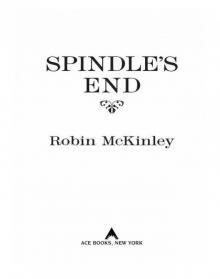 Spindle's End
Spindle's End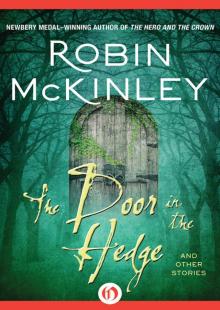 The Door in the Hedge: And Other Stories
The Door in the Hedge: And Other Stories The Blue Sword
The Blue Sword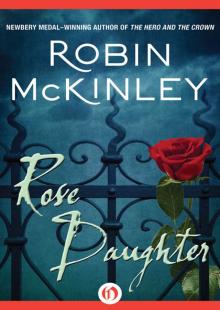 Rose Daughter
Rose Daughter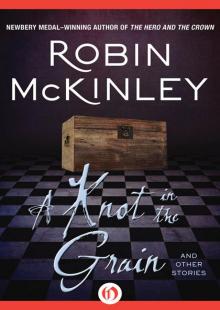 A Knot in the Grain and Other Stories
A Knot in the Grain and Other Stories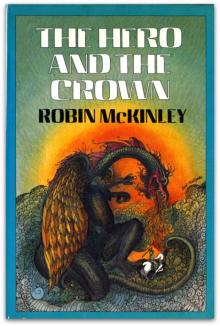 The Hero And The Crown
The Hero And The Crown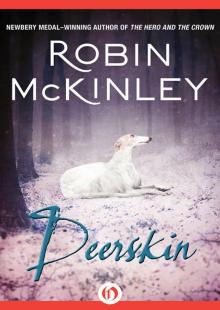 Deerskin
Deerskin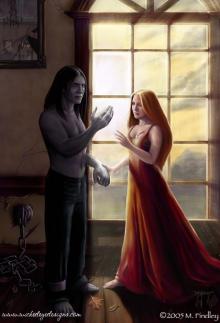 Sunshine
Sunshine Beauty: A Retelling of the Story of Beauty and the Beast
Beauty: A Retelling of the Story of Beauty and the Beast Shadows
Shadows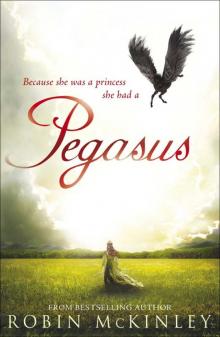 Pegasus
Pegasus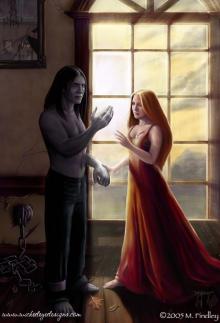 Chalice
Chalice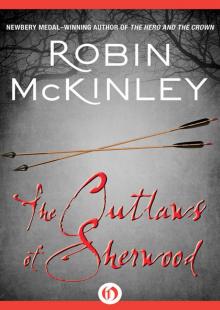 The Outlaws of Sherwood
The Outlaws of Sherwood Fire: Tales of Elemental Spirits
Fire: Tales of Elemental Spirits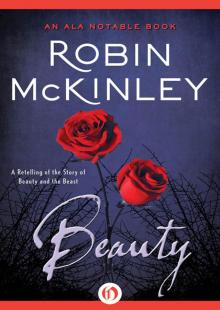 Beauty
Beauty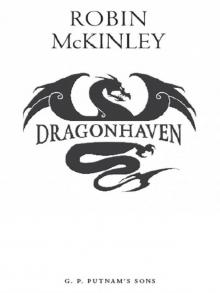 Dragon Haven
Dragon Haven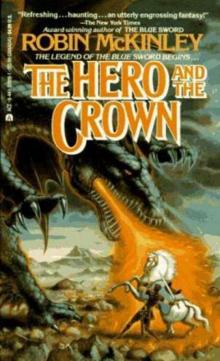 The Hero And The Crown d-2
The Hero And The Crown d-2 A Knot in the Grain
A Knot in the Grain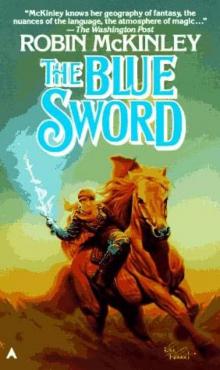 The Blue Sword d-1
The Blue Sword d-1 Beauty (v1.2)
Beauty (v1.2) The Door in the Hedge
The Door in the Hedge